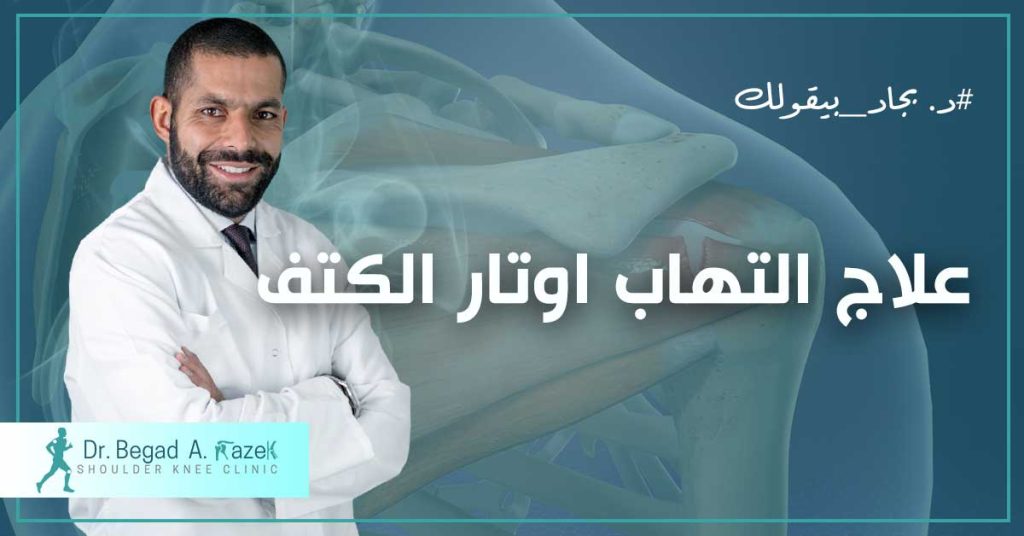
Treatment for shoulder tendonitis varies depending on the severity and nature of the injury. There are several steps that can be followed to treat shoulder tendonitis:
- Rest: You may need to give the shoulder enough rest to get rid of inflammation and speed up healing. A splint or cast may be used to stabilize the shoulder and reduce excessive movement.
- Applying ice: Ice can be applied to the shoulder for 15-20 minutes several times a day to reduce inflammation and relieve pain. It is best to place a cloth between the snow and the skin to avoid frostbite.
- Drug treatment: The doctor can prescribe painkillers and non-steroidal anti-inflammatory drugs (NSAIDs) to relieve pain and inflammation. You should consult a doctor before taking any medication.
- Physical therapy: Physical therapy can help strengthen the muscles surrounding the shoulder and improve shoulder mobility. Techniques used may include rehabilitative exercises, stretching exercises, and tissue massage.
- Rehabilitation exercises: Rehabilitation exercises can help enhance strength and flexibility in affected muscles and tendons. These exercises should be programmed and directed by a qualified physical therapist.
- Soluble injections: In severe or chronic cases of shoulder tendonitis, your doctor may suggest injecting corticosteroids (anti-inflammatory steroids) into the affected area to reduce inflammation and relieve pain.
- Surgery: Surgery may be necessary in rare cases and when other treatments do not respond. The appropriate surgical method is determined based on your individual case and the surgeon’s discretion.
It is important to consult a specialist doctor to evaluate your condition and direct the most appropriate treatment for you. Shoulder tendinitis may take time to fully heal, so you must adhere to the instructions of your doctor and physical therapist and follow up regularly for gradual improvement.

What is surgery to treat shoulder tendonitis?
Surgery to treat shoulder tendonitis depends on the severity and type of injury and the patient’s response to other treatments. Before surgery is considered, conservative and conservative treatments for tendonitis are tried for a period of time.
Here are some possible surgical procedures to treat shoulder tendonitis:
- Shoulder arthroscopy: A small, flexible instrument called an arthroscope is inserted into the shoulder through a few small incisions in the skin. This procedure allows the surgeon to view the tendons and surrounding tissue and make any necessary repairs or adjustments. Procedures that may be performed during shoulder arthroscopic surgery may include removing damaged tissue, repairing torn tendons, or cleaning sprained tendons.
- Open surgery: In some cases, open surgery may be necessary if the injury is severe or complex. A larger incision is made in the skin to access the affected tendon and make necessary repairs, such as reattaching slipped tendon or removing damaged tissue.
- Tendon Transfers: In some severe cases, when there is significant damage to the tendons or loss of specific functions, other tendons from another area of the body can be transferred to the shoulder to replace the damaged tendons and restore shoulder functions.
Remember that surgery to treat shoulder tendonitis is not always the first option and depends on the discretion of the specialist surgeon based on the diagnosis and assessment of the patient’s individual condition. Surgical options and the risks and benefits associated with surgery should be discussed with your surgeon to make the appropriate decision for your condition.
Recovery time after treating shoulder tendonitis
The duration of recovery after treatment for shoulder tendonitis varies based on several factors, including the severity of the injury, the type of treatment used, and the patient’s response to treatment. The recovery process may take a few weeks to several months. However, this period should be an estimate and may vary from case to case. Here are some factors that may affect recovery time:
- Severity of injury: If the injury is mild and the inflammation is minimal, recovery may be faster. However, if the injury is severe and includes tears in tendons or tissue, recovery may take longer.
- Type of treatment: The duration of recovery also depends on the type of treatment followed. If shoulder tendonitis is treated with non-surgical means such as rest and physical therapy, recovery may be faster compared to surgery.
- Patient adherence: Patient adherence to instructions for rest, self-treatment, and safe medical practice plays an important role in the duration of recovery. You should follow the directions of your doctor and physical therapist and do the prescribed rehabilitation exercises regularly.
- General health condition: The patient’s general health condition may affect the duration of recovery. Some factors such as having chronic health conditions or smoking can delay the recovery process.
It is important to know that recovery from shoulder tendonitis may be gradual, as the condition gradually improves with time and appropriate treatment. You should consult your physician for a more accurate estimate and personalized guidance based on your individual condition.

